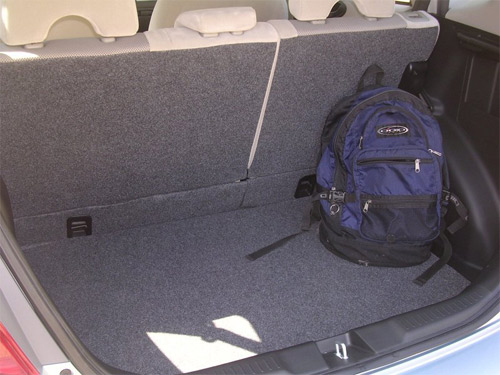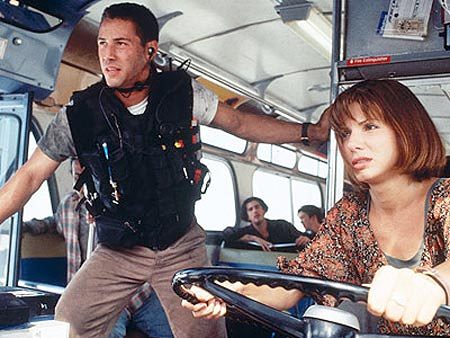Anatomy of a profitable freemium
Choosing a freemium as a business model can be a brilliant or deadly decision. It depends not only on marketing, but also on the type of business and product (some are simply not suitable for freemium).
Freemium assumes that the user is offered two parts of the product. The first - for free, the second - for the money. For an entrepreneur, it is important to understand when, how and why a free user will turn into a paid (conversion), that is, where to draw the line between the free and paid parts.
If we draw an analogy with a car, then freemium is a massive car, because one of the elements of a profitable freemium is reaching the mass market (preferably “for all people on the planet” or “for all companies on the planet”). So, what are the premium packages we can offer the driver to a free car? Consider five packages, starting with the most preferred and ending with the least preferred and even dangerous.

')
In the car, two seats and a very small trunk is normal, if you have no children or only one child, but if you have two children, child seats, a pram, then from a trip to the store you get a real circus attraction with folding seats and diapers the cabin.
A paid offer says that for $ X per year you can add roof rails to a roof or trailer trailer, or something else that will solve the problem of lack of space forever. Stubborn or thrifty drivers will continue to struggle and endure, but every week the torment will be repeated, and each time at the thought of replenishing the offspring they will think that it is necessary to increase the place. In the end, most people will buy an extra resource.
Examples: Dropbox , iCloud
It should be noted that the boundary between the free and paid services is drawn between 1 and 2 children. For people with 0 or 1 child, the value of the free offer is retained.
Key Features:
Risk: it’s wrong to choose a border where to draw the line between free and paid offers.

Everyone wants a car, but everyone has different standards for acceptable risk. You can sell a car with a certain level of security (minimum level of survival), and offer an upgrade that eliminates risks. Depending on what you are selling, a premium offer can take risks or in extreme cases (a personal engineer in the event of a server crash), or simply facilitate everyday life (uptime guarantee).
Examples: Wordpress , Red Hat .
Key Features:
Risks:

Everyone remembers the film “Speed”, in which the bomb was activated at a speed of 80 km / h and could explode if the speed falls below this limit. Few people in such a situation will be satisfied with the presence of an airbag (see above), and not everyone will risk continuing a constant movement at such a speed. In a similar situation, corporate users, whose employees are beginning to use social networks, fall. Thus, the premium offer is that you promise the client to deactivate the bomb by transferring control to it.
Examples: Yammer (similar to Twitter and Facebook for corporate users), Salesforce to a lesser extent.
Key Features:
Risks:

The most necessary thing on a long journey is cruise control, who wants to hold the gas pedal evenly for three hours in a row? On the other hand, if the buyer uses the car only in the city, then you will never get money from him.
Example: Evernote .
Key Features:
Risks:

The degradation and default state of all freemium offers is when developers do not know the audience and the market enough to understand what product properties should be highlighted in a paid offer, so they push all the small options and upgrades that may look attractive, but never really will be in demand by most users. In this case, the developer can either hope that some of the whistles will turn into basic needs (through marketing, you can try to convince users of this), or continue to study the market in order to move on to one of the more competent models of freemium (see above).
Example: many startups .
Key Features:
Risks: you run out of money, because the conversion rate is low, and there are few regular users (as soon as people realize that an upgrade is not needed, they refuse to pay for a paid subscription or do not renew it).
Freemium assumes that the user is offered two parts of the product. The first - for free, the second - for the money. For an entrepreneur, it is important to understand when, how and why a free user will turn into a paid (conversion), that is, where to draw the line between the free and paid parts.
If we draw an analogy with a car, then freemium is a massive car, because one of the elements of a profitable freemium is reaching the mass market (preferably “for all people on the planet” or “for all companies on the planet”). So, what are the premium packages we can offer the driver to a free car? Consider five packages, starting with the most preferred and ending with the least preferred and even dangerous.
1. Freight Freight

')
In the car, two seats and a very small trunk is normal, if you have no children or only one child, but if you have two children, child seats, a pram, then from a trip to the store you get a real circus attraction with folding seats and diapers the cabin.
A paid offer says that for $ X per year you can add roof rails to a roof or trailer trailer, or something else that will solve the problem of lack of space forever. Stubborn or thrifty drivers will continue to struggle and endure, but every week the torment will be repeated, and each time at the thought of replenishing the offspring they will think that it is necessary to increase the place. In the end, most people will buy an extra resource.
Examples: Dropbox , iCloud
It should be noted that the boundary between the free and paid services is drawn between 1 and 2 children. For people with 0 or 1 child, the value of the free offer is retained.
Key Features:
- The inevitability of the upgrade for most users who continue to use the product.
- Regular, repeatable temptation for users to upgrade during normal use of the product.
- Reducing the value of a free offer if the user continues to stay within free limits.
Risk: it’s wrong to choose a border where to draw the line between free and paid offers.
2. Airbag

Everyone wants a car, but everyone has different standards for acceptable risk. You can sell a car with a certain level of security (minimum level of survival), and offer an upgrade that eliminates risks. Depending on what you are selling, a premium offer can take risks or in extreme cases (a personal engineer in the event of a server crash), or simply facilitate everyday life (uptime guarantee).
Examples: Wordpress , Red Hat .
Key Features:
- Some will be interested by their nature in the premium offer, it can be users from government agencies or commercial organizations, with their usual paranoia in the field of service reliability.
- Some will be completely satisfied with the free offer until something bad happens to them.
- Some will never upgrade because they like the feeling of risk.
Risks:
- Your product is used in non-critical areas where failures are allowed.
- Another company came up with selling security and safety services as an addition to your product without your participation.
3. Bomb

Everyone remembers the film “Speed”, in which the bomb was activated at a speed of 80 km / h and could explode if the speed falls below this limit. Few people in such a situation will be satisfied with the presence of an airbag (see above), and not everyone will risk continuing a constant movement at such a speed. In a similar situation, corporate users, whose employees are beginning to use social networks, fall. Thus, the premium offer is that you promise the client to deactivate the bomb by transferring control to it.
Examples: Yammer (similar to Twitter and Facebook for corporate users), Salesforce to a lesser extent.
Key Features:
- The product is easily suitable for use in critical areas.
- The more actively a product is used, the stronger the company depends on proper management and management.
- Bonus offer gives the company control over the product.
Risks:
- Users feel subject to extortion.
- The product will never be distributed virally.
- The product will never be used in areas where it creates risks for the organization.
4. Cruise control

The most necessary thing on a long journey is cruise control, who wants to hold the gas pedal evenly for three hours in a row? On the other hand, if the buyer uses the car only in the city, then you will never get money from him.
Example: Evernote .
Key Features:
- The free product is good enough for anyone who avoids certain usage patterns.
- Even if users cannot avoid these templates, they will not necessarily upgrade immediately.
Risks:
- Users who cannot avoid these patterns will find their way out or be tolerated.
- You will not keep users long enough until the moment when they need cruise control.
- Your cruise control is a vitamin, not a medicine.
5. Whistles and buzzers

The degradation and default state of all freemium offers is when developers do not know the audience and the market enough to understand what product properties should be highlighted in a paid offer, so they push all the small options and upgrades that may look attractive, but never really will be in demand by most users. In this case, the developer can either hope that some of the whistles will turn into basic needs (through marketing, you can try to convince users of this), or continue to study the market in order to move on to one of the more competent models of freemium (see above).
Example: many startups .
Key Features:
- The founders of a startup know little about the market, but they understand that advanced services (power users) are available for any service.
- Bonus offer is an attempt to sell features for advanced users.
- The product is saturated with beautiful ryushkas that are difficult to describe in terms of ROI.
- In the marketing messages to users, the high cost of running a business and the need to monetize to recoup current expenses are more often mentioned, the value of premium offers is mentioned less often.
Risks: you run out of money, because the conversion rate is low, and there are few regular users (as soon as people realize that an upgrade is not needed, they refuse to pay for a paid subscription or do not renew it).
Source: https://habr.com/ru/post/145921/
All Articles